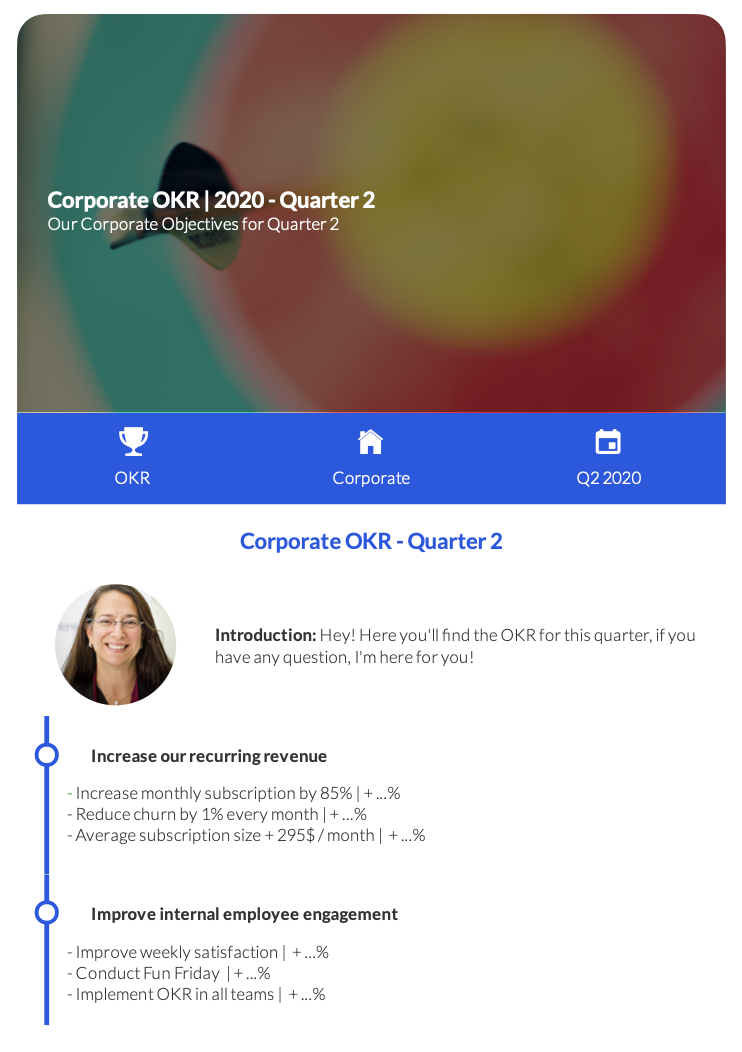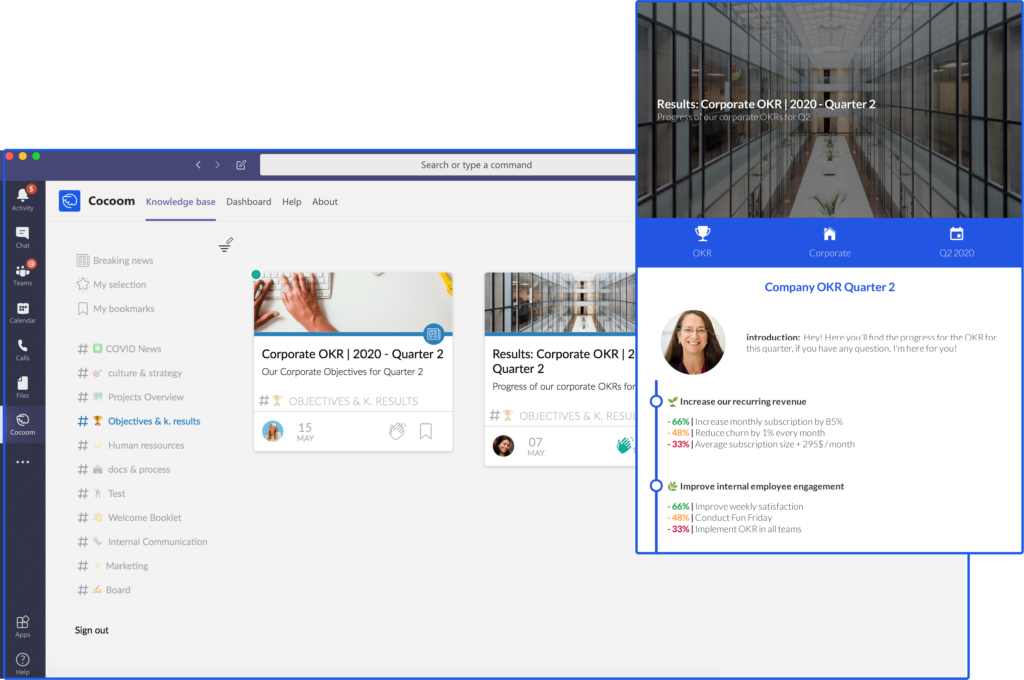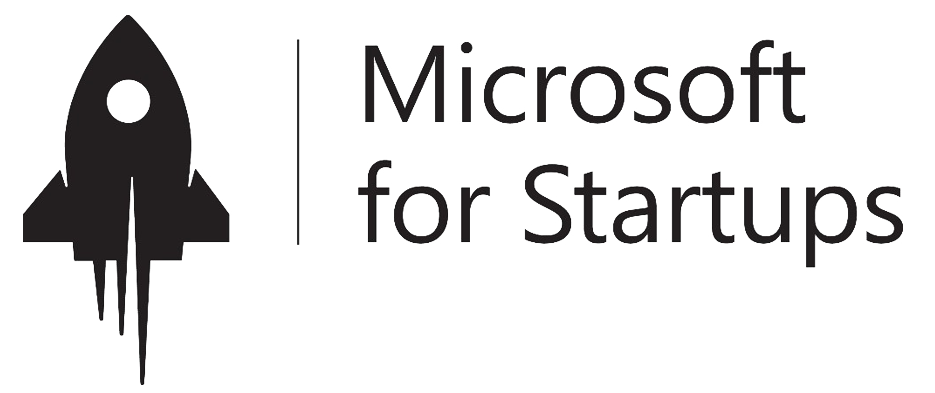29 May

We sometimes tend to lose sight of our objectives, to move away from the overall strategy of the company. We lose time, teams become less and less committed, find no meaning in their missions and, in the long run, this lack of alignment is felt on the company’s results.
73% of communicators believe that one of the major challenges of their company is to re-engage teams around objectives and strategy.
This is where the OKRs come into play, allowing the company’s strategic plan to be applied in a very operational way.
For the record, the OKR method was invented in the 50s by Peter Drucker, it was then taken over at Intel in the 70s, then at Google in the late 90s where it is still in place. Since then, many other companies have adopted it: Twitter, Linkedin, Zynga, Netflix, Oracle… Always with success!
OKR, quesaco?
O : OBJECTIVES
KR : KEY RESULTS
Where does the company want to go?
How’s it’s gonna get there?
The principle of OKR is very simple, it is a question of dividing the global strategy of the company into – maximum 5 – key objectives and to measure these objectives with Key Results in order to know if, yes or no, the defined objectives are achieved.
The OKRs must be redefined each quarter.
The advantages of the OKR method:
+ Productivity
+ Collective work
+ Alignment
+ Productivity: everyone will focus on completing a specific task, will accomplish specific objectives, while being truly in line with the company’s overall strategy. Thus everyone is efficient, the work is really prioritized and shared cleverly, so no more useless tasks and badly thought out distributions.
>>> Companies where employees are truly engaged are 17% more productive and 21% more profitable! (Source : Gallup)
+ Collective work: each mission is really part of a global logic, the work is better distributed and your successes are added to those of your collaborators and contribute to the overall success.
+ Alignment: the whole company is really aware of the company’s objectives and missions and is therefore better aligned with its values! Each employee is aligned with the common objectives.
>>> Employees who believe in their company’s mission are 72% more productive (Source: Institute for the Study of Labour, 2013)
+ Commitment
+ Reactivity
+ Transparency
+ Commitment: each employee is truly involved in the management of his missions, his work takes on a concrete meaning in the global strategy of the company, which is a real vector of commitment.
>>> 90% of employees in France are not engaged at work. (Source : Gallup)
+ Reactivity: companies are becoming more agile, and will be more quickly aware of market changes and be more responsive. They become able to adjust more quickly to external changes.
+ Transparency: objectives and results are shared by all, services are no longer compartmentalized, which also improves communication between each service.
>>> 1 in 3 young people think they don’t have a real impact on their organization. (Source ; Jobteaser)
So concretely, how do you implement an OKR strategy?
Here are the key steps to set up an OKR methodology in your company. For each of these steps, we offer you one or more tool(s) to support you.
#1 Meeting
The quarterly OKRs are set by management and are based on the company’s vision and strategy. Impossible to spread out with the OKR methodology since it is a question of setting BIG MAXIMUM 5 objectives. These objectives must be specific, measurable and achievable!
Choosing is giving up, so you will have to prioritize your goals, asking yourself really and concretely what you should/will have accomplished in three months. It’s not a list but only ONE goal. For example, “in three months time we would like to have improved employee commitment”.
Then you have to find out what you have to do very concretely to make it happen, for example, “for that we will have to … set up playful moments, improve the weekly employee satisfaction time and set up OKRs in all the teams”.
And to make sure you have a priority goal here, turn it the other way around, for example: “if I don’t improve employee engagement then… my results will be very bad, my turnover will increase drastically, my employer brand will suffer…”
There is a tool for your meetings: Aster
Even if defining the OKRs is the task of the leader(s); you are not alone, a tip is to survey your entire team to find out what they think the goals for the quarter should be! As well as to validate the clarity of your OKRs, to check their understanding.
Survey your entire business with <a href="https://forms.office.com/Pages/DesignPage.aspx" target="_blank" rel="noreferrer noopener">Microsoft Form</a>

#2 Cut out
Your objectives are defined, but they are not yet OKRs, so you need to determine for each of these objectives, 3 to 4 Key Results. These are precise indicators that will allow you to know if you have, or not, reached your objective.

Use the <a href="https://cocoom.com/modeles/strategie/" target="_blank" rel="noreferrer noopener">templates Cocoom OKR</a> !
In order to define your Key Results, you have to find out if you really have the hand on this KR, you have to be able to have an impact on it. For example, “increase customer satisfaction by 10%” is not a suitable KR, you don’t really have the hand on it. You have to ask yourself “How can you improve this customer satisfaction? For example, by reducing the waiting time, an adapted Key Kesults will then be: “reduce the average waiting time by 5 minutes”.
⚠️ OKR ≠ KPI!
But then what is the difference between OKR and KPI? A KPI (turnover, EBITDA…) allows you to measure the performance of something (a process, a service, a marketing campaign…). The KPI can be used as a warning signal. It allows you to monitor and control an activity through a dashboard. A KR sets a result objective to be reached! The KR are therefore more concrete and shorter term.
KRs, or key results, should be measurable, ideally as a number or percentage. They must be ambitious, if you systematically reach 100% of your OKRs, they must be revised upwards (reaching 70% is already very good). However, KRs are a source of motivation that cannot and must not turn into a potential punishment. It is not a performance evaluation, OKRs are a management tool and not an evaluation tool. If your OKRs become assessment tools, you will no longer set them in the right way.
At Google, we talk about “stretch goals”, these are Key Results that are designed to take employees out of their comfort zone, to push them to do things they haven’t done yet or that they didn’t think they could do:
#3 Planning
Your OKRs are now defined, and they are visible to everyone, and yes, because transparency is a real success factor in the OKR methodology.
But you’re not finished yet, you now need your KRs to have leaders, individuals who, alone or as a team, will be in charge of the KR. The people in charge of KR are not necessarily the managers of the services, of the teams!
Everyone can then, alone or in a team, plan their TO-DO according to the OKRs.
To do this, use the Planer in Microsoft Teams...
One way may be to use labels very simply to assess your progress and know at a glance what you need to work on:
- Scheduled: the task has not yet started
- Ongoing: we’re working on it right now
- Done: the task is complete
- For later: either we can’t do this task yet (we are missing elements), or it is not or no longer a priority.
#4 Measuring and communicating
You will not just set OKRs for the quarter and not consult each other for three months! You need to meet weekly, on a regular basis, to quickly assess your progress on each OKR, and then you will be able to adjust your percentages. These milestones make it possible to assess progress and, here again, to make everyone aware of where their team, other teams and the company as a whole stand; in relation to the final results: the quarterly OKRs.
The risk otherwise would be not to be on the company’s overall progress towards its OKRs and not to be on time, not to achieve its objectives.
The ideal is therefore to adjust each week the percentage of achievement of the KR, 20%; 45%; 60%?
You can define steps:
- 20%: we’re on the right track!
- 70%: Great! A little more effort…
- 100%: Wahoo, it’s over!
For that nothing could be simpler, adjust your Cocoom template, directly in Teams, where you can make your team meeting!

#5 Adjust
Remember to frequently survey your employees in order to get feedback from the field and to remain agile, whether it is about very concrete questions about your OKRs, possible blocking points or the way you work.
You can use <a href="https://www.polly.ai/microsoft-teams" target="_blank" rel="noreferrer noopener">Polly</a> in Microsoft Teams!
#6 Celebrate
Have you achieved your goals? Short or long term? Share these small (or big) victories with all the teams!
Use the appropriate Teams channel and create a Cocoom memo!
#7 Perpetuate
You have set up your OKRs over a quarter and the expected results are there! So, continue and perpetuate this mode of operation for the months and years to come!
So where do we start?
There are 2 ways to implement the OKR method in your company for the first time:
- Start at the highest hierarchical level and roll out these new practices downwards (Top Down).
- Start with a test team (or department) and then gradually generalize to the whole company.
The DO & DON’T of the OKR methodology:
DO
+ Promote autonomy: so that your employees are truly autonomous in their tasks!
+ Choose a Key Results owner (not necessarily a manager): in order to have a real referent for each KR.
+ Setting SMART goals: everything will revolve around your initial objectives, you have to set them in the right way.
+ Communicate throughout the project: communication is the key, teams must work together, know where they stand throughout the project!
DON’T
– Setting objectives that are too long term: we stay on a quarter, that’s the maximum.
– Setting objectives that are too long term: we stay on a quarter, that’s the maximum.
– Setting the wrong KR: if your goals have the wrong KR you will feel like you are not reaching them.
– Make OKRs a sanction tool (which they are not!): OKRs are a managerial tool and in no way an evaluation tool (or worse, a sanction tool).
👉 Discover the Cocoom integration to Teams
<a href=”https://cocoom.com/installer-teams/” target=”_blank” rel=”noreferrer noopener”>👉 How do I install Microsoft Teams? </a>





